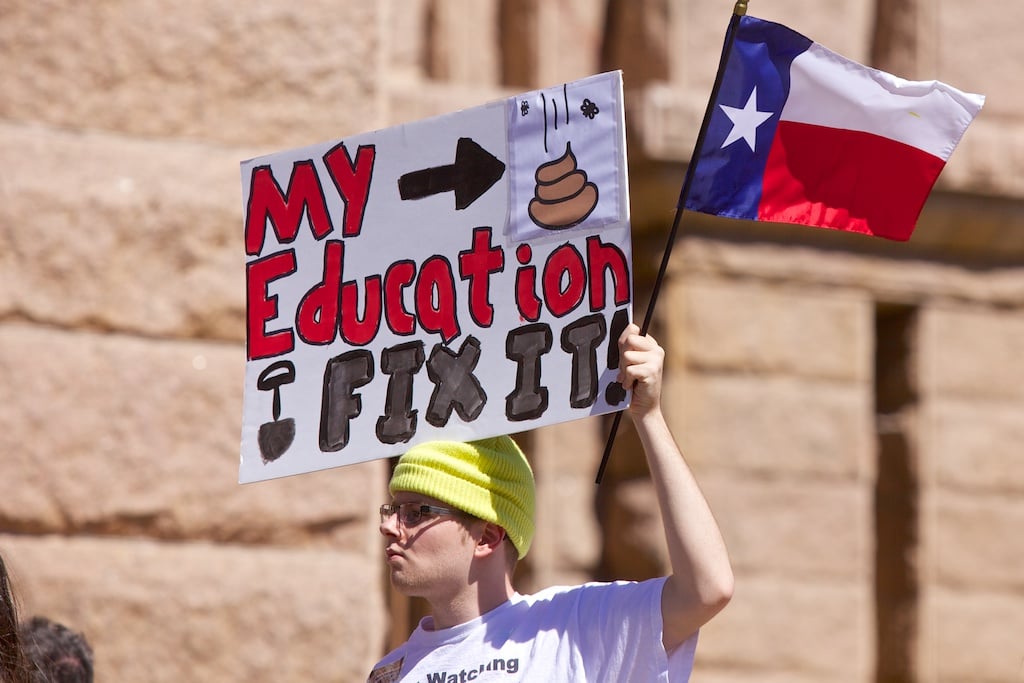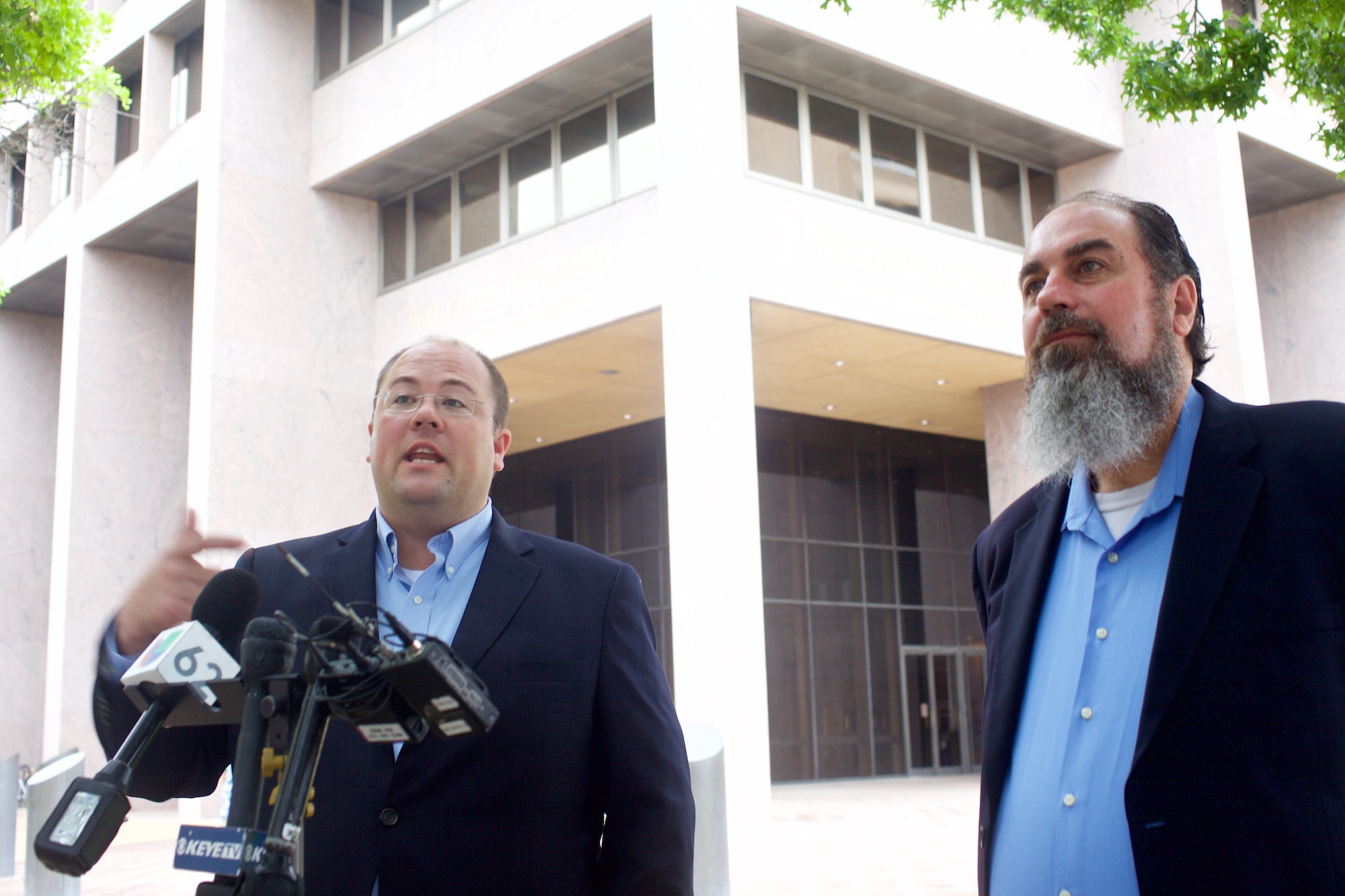
Experts to Lawmakers: Fund Schools Less to See How Creative They Get


Depending on whose measure you’re using, Texas is somewhere between 38th and 49th in the nation when it comes to per-student funding. Instead of wallowing in our poor luck, or paying something closer to the national average, Senate Education Chairman Larry Taylor convened a hearing Tuesday that considered a more sanguine response: A big round of applause for forcing schools to do so much with so little.
“The school districts are capable of generating high outcomes with low funding,” Education Resource Group President Paul Haeberlen assured the Senate Education Committee. “If you give them less money, they are forced to deal with it.”
Since 1999, Haeberlen’s group has measured and promoted efficiency in Texas school districts. This year, he was one of a handful of experts — along with Lori Taylor of the Texas Smart Schools initiative — invited to address an interim charge from Lieutenant Governor Dan Patrick to study “performance-based funding mechanisms that allocate dollars based upon achievement versus attendance.”
In other words, Patrick wants to study how to fund schools not based on their needs, but on their results.
That would be a dramatic shift in how Texas funds its schools. The current system funds schools based on their enrollment, with adjustments for local costs and students’ special needs. The state rates schools on their test scores and graduation rates, but doesn’t tie funding to them. Teachers’ groups are already fighting Texas’ efforts to tie teacher pay to test scores; now, Patrick wants to consider expanding that to the entire school finance system.
But with the Texas Supreme Court’s recent encouragement — in the form of its school finance ruling in May — for lawmakers to shake up school finance in 2017, even the most fringe ideas are on the table. Taylor, for one, suggested he’d be game to design a whole new finance scheme from ground up.
“If we’re gonna start over,” he said, “my thinking is we start with what does it cost to educate a kid today. Let’s get some real facts. What does it cost, why are those costs there?”
The Legislature has consistently balked at that kind of honest accounting in the past, even though state law requires such a study every two years. During the recent school finance trial, expert testimony put the cost of public education at $6,404 more per student than the state already pays.
But Haeberlen assured the committee that what schools need isn’t more money, just an attitude adjustment. An analysis by his firm, ERG, produced a list of the most efficient school districts in Texas by comparing their spending efficiency with the quality of their test scores and other measures. Haeberlen suggested rewarding those few districts — possibly financially — and encouraging all the rest to follow their lead. “People want rewards, and the rest of the crew will follow,” he said. “It’s just how business works.”
Since schools spend such a large share of their budgets on salaries, Haeberlen suggested looking for districts that succeed with fewer teachers. “It’s gonna come down to students per staff member, and the fewer staff members there are, then the more efficient it will be,” he said. To get there, he suggested schools should be completely free from state law that generally requires one teacher for every 22 students — even though research suggests that students are better served by smaller classes. If schools can keep their test scores up with fewer teachers, he said, the state should let them.
“It would all be based on a very, very shaky foundation.”
“Correct,” Haeberlen replied.
It’s a curious time to double down on the role of standardized testing. Lawmakers have generally been reducing standardized testing over the last few years, even making it easier for students to graduate without passing them, after years of complaints from parents that schools are relying too heavily on STAAR. Last month an advisory panel came just short of recommending the state scrap STAAR altogether in favor of a low-stakes alternative.
If the state’s entire school funding scheme were tied to STAAR, said Patty Quinzi with the Texas chapter of the American Federation of Teachers, “It would all be based on a very, very shaky foundation.”
Retired teacher and principal Velma Ybarra, representing Hispanics Organized for Political Education, told the committee she was concerned that rewarding schools for their test scores would only take money from schools with high-needs students. “If we start funding our school systems based on achievement or we weigh achievement greatly, we’re going to find the same thing that we find in our [test score] reports,” she said — namely, that schools in less affluent neighborhoods, whose students are less comfortable with English or have more special needs, fare worse.
After the hearing, Monty Exter with the Association of Texas Professional Educators told the Observer that he’s sure there are plenty of cases in the business world where it pays to put more money into high-achieving areas of a company. But, he said, “that is in no way analogous to the school system. We actually need to send dollars to the areas that are likely to have the lowest performance returns as they are currently measured on standardized testing.”
He noted that none of the experts or lawmakers who spoke Tuesday described what an entire funding system based on performance might look like. But even without such a concrete proposal, he said, Patrick’s charge to study the notion suggests it could surface during school finance talks next session. “I think it’s reasonable to be on the lookout that this could be the Senate’s response to the House’s more time-honored approach to a school finance bill,” Exter said.


